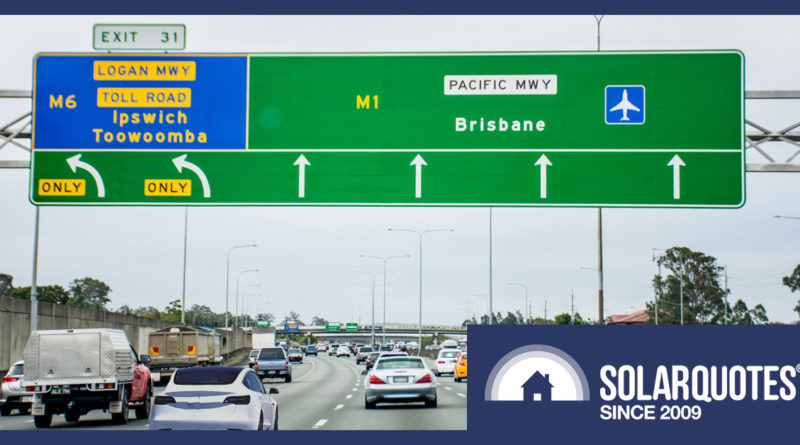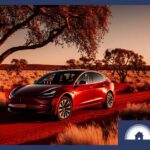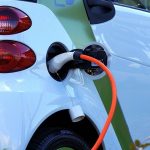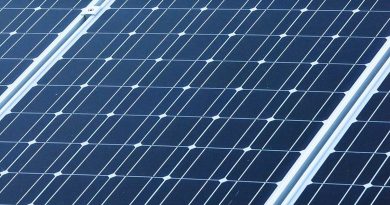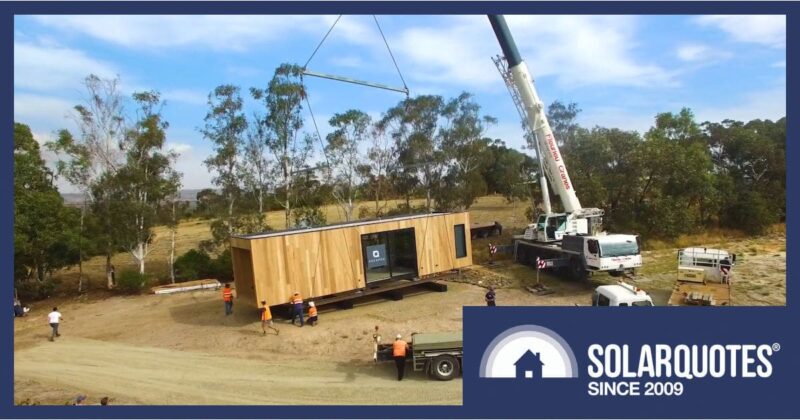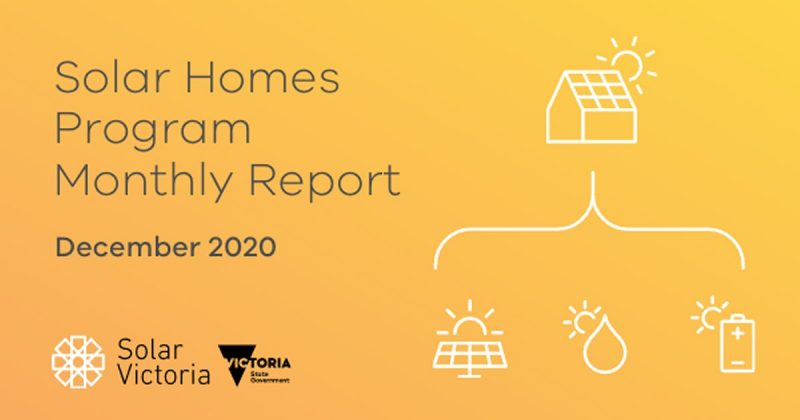10% of New Cars Sold Today Are Electric. In Australia It’s 2%
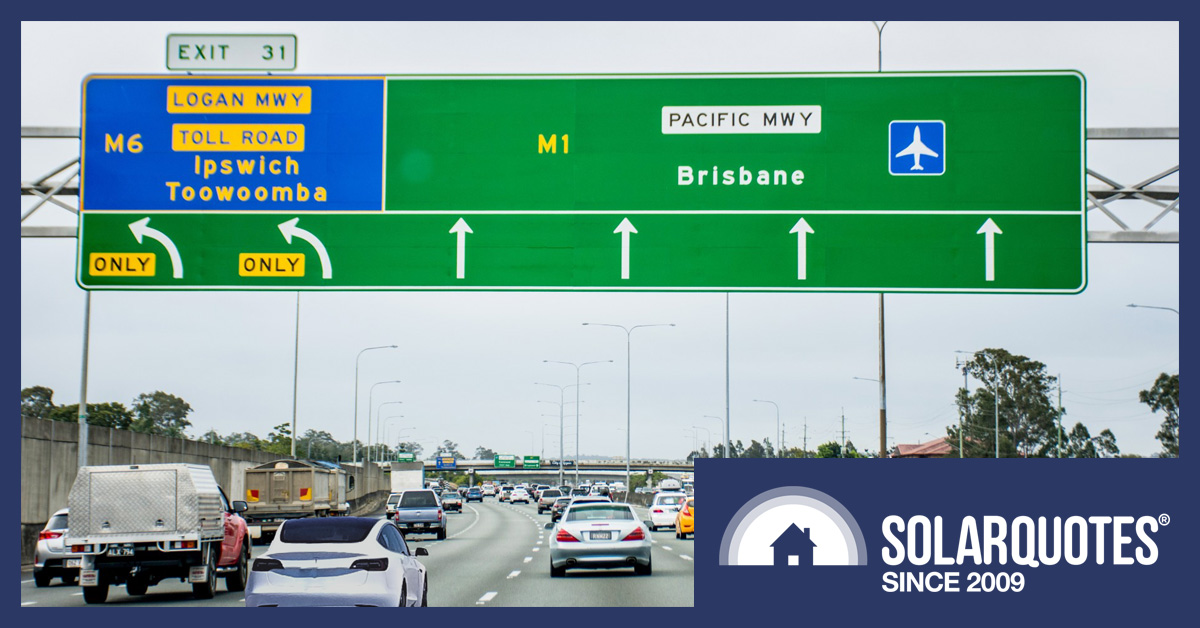
There are so few EVs on Australian roads, I had to badly Photoshop one onto this picture.
As I write this, approximately 1 in 10 new cars sold worldwide are electric. But not in Australia. Here it’s little more than 1 in 50. That’s a large difference and it’s not because we regularly drive beyond the black stump. Australia is more urbanized than Germany and, on average, we drive our cars fewer kilometres than they do. Most Australian families keep at least one vehicle well within the black stump.
Our lack of EVs also is not because we don’t want them. Plenty of Australians want an electric car. They just have trouble getting them. Electric vehicles are either available in limited numbers far below demand or have waiting periods that can be over a year depending on the model. While some conventional cars currently have long waiting periods, for EVs they’re far worse.
This comes down to Government policy. (Boo! Hiss!).
Not only have we been slow to introduce incentives, but we’ve also been quick to introduce disincentives. Despite this, Australian EV sales tripled last year. They are now just over 2% of new car sales and I expect this figure will increase rapidly. I also think uptake won’t just mirror that of other countries, but we’ll start to catch up.
In this post, I’ll tell you what’s happening with EVs in the rest of the world and why Australia lags so far behind.
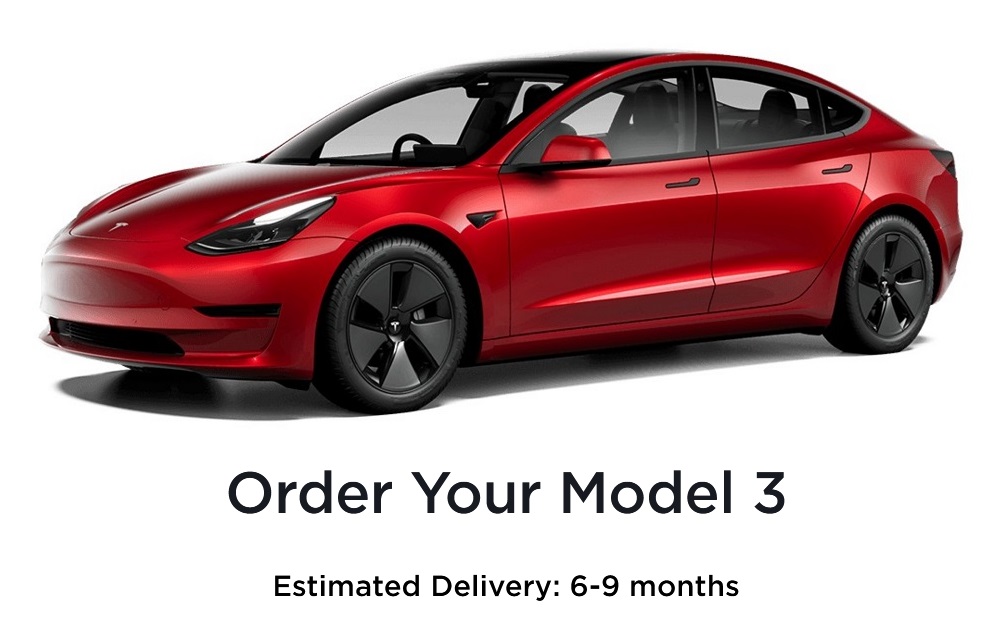
Tesla doesn’t have a reputation for getting things done on time, so if you order a Tesla Model 3 on the same day you get pregnant, I’d say it’s 50-50 you’ll be driving bub home from the hospital on electric power.
World EV Production
The International Energy Agency (IEA) has published a report on the current state of EVs that you can check out here. There’s no need to be scared of it. It’s not 260 pages long like most IEA reports. It’s only a single page. Admittedly, to get to the bottom of that page you have to scroll down around 30 metres — but it’s still, technically, only one page.
In the report1 they estimate there are 16 million EVs on the road today. These electric vehicles should have reduced world oil consumption and CO2 emissions, but increased sales of ICE (Internal Combustion Engine) SUVs cancelled it out.
[embedded content]
Last year 6.6 million new EVs were registered. By region, the percentages were:
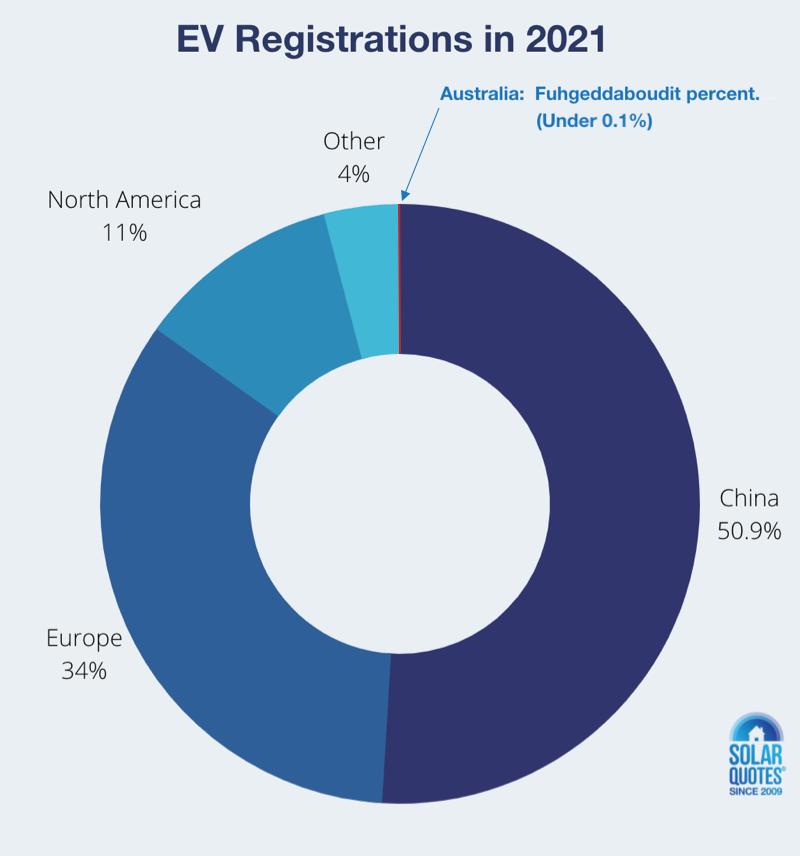

As you can see, China really doesn’t want to be dependent on imported oil, no matter what countries it comes from.
Here are the five largest manufacturers:
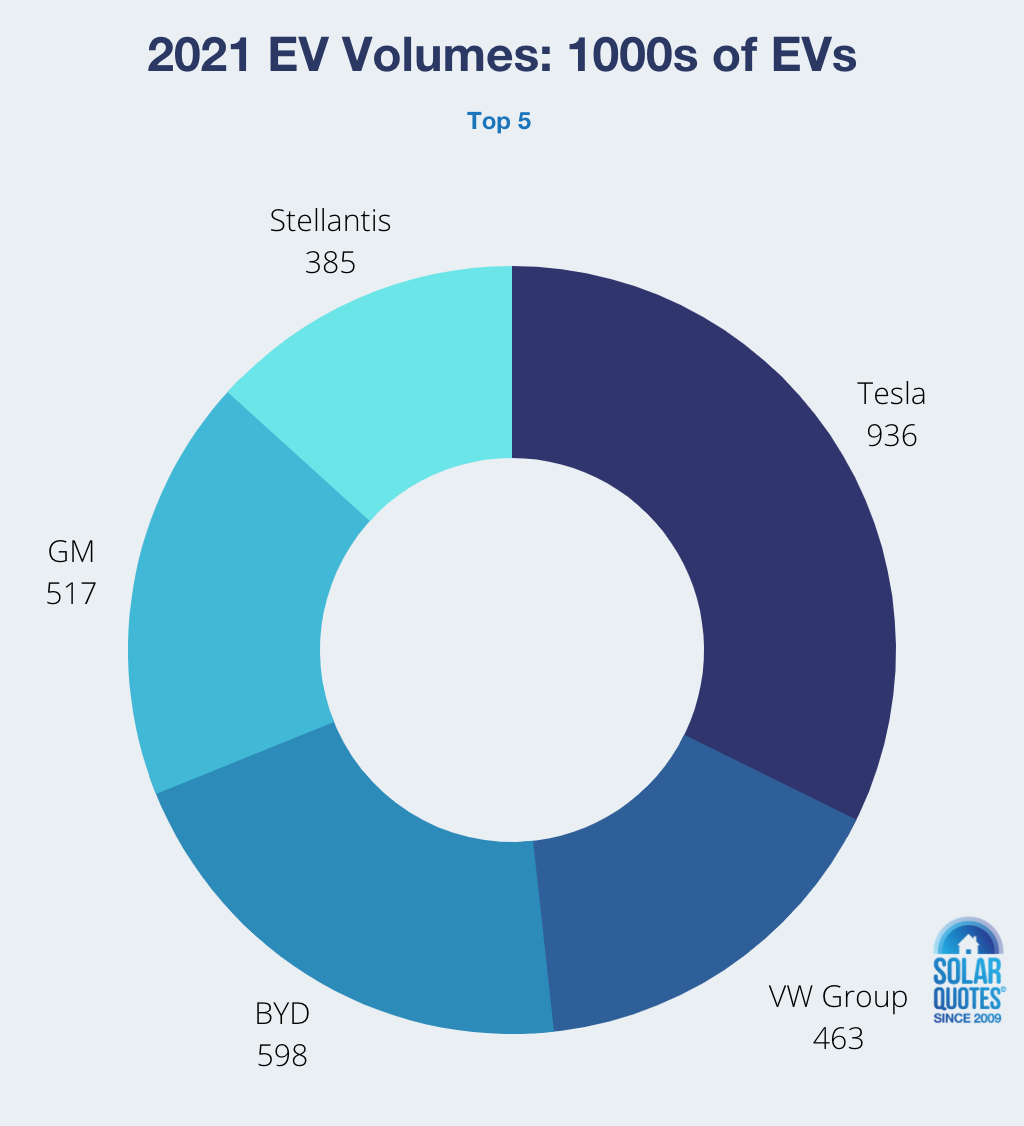

In case you are wondering what the hell Stellantis is, they are these guys here. It’s a new company Frankensteined together last year and is the 6th largest automobile maker in the world.
EV Extrapolation
Here’s a graph from the IEA EV analysis showing worldwide figures for how many millions of electric cars were registered from 2010 to 2021. It also shows them as a percentage of total new car sales:
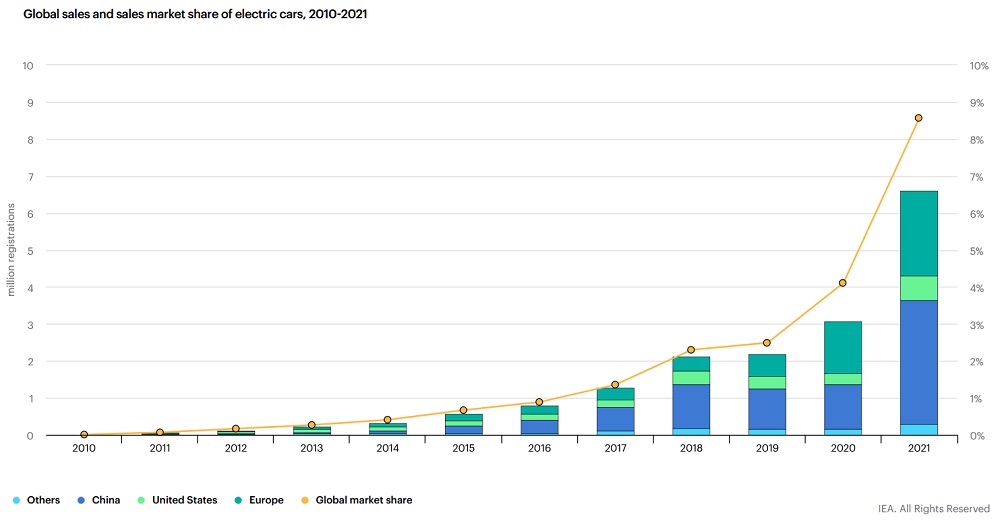

Looking at global market share, six years ago EVs were 1% of new car sales. In 2021 they were 8.7%. This is a very rapid expansion. Over the past 10 years, the annual growth rate was over 50%. At this rate electric vehicles will be around 13.5% of new car sales this year and, right now, they should be around 10%.
If this expansion continues — which it won’t — EVs will reach 100% of new car sales in 2027.
Since new car sales aren’t going to go all-electric in just five years’ time, the growth in the percentage of EV new car sales is probably not what we should consider2.
Looking at actual EV production should be more informative. This was 6.6 million vehicles in 2021 — more than twice as many as in 2020. Over the past 10 years, EVs’ annual growth rate was around 50%. If this continues in 2027, 75 million electric vehicles will be built. The world made 75 million vehicles in 2019, a record year. Allowing for some increased demand means all new cars will be EVs in 2028 — provided the trend continues.
I’m not saying EV production will grow this rapidly and I don’t think it will. But there is potential for rapid expansion.
Adoption Rate
Just because I can extrapolate current trends into the future doesn’t mean they’ll actually happen. Technological adoption doesn’t work that way. Instead, it tends to work almost that way, as this graph of US household uptake of new technology shows:
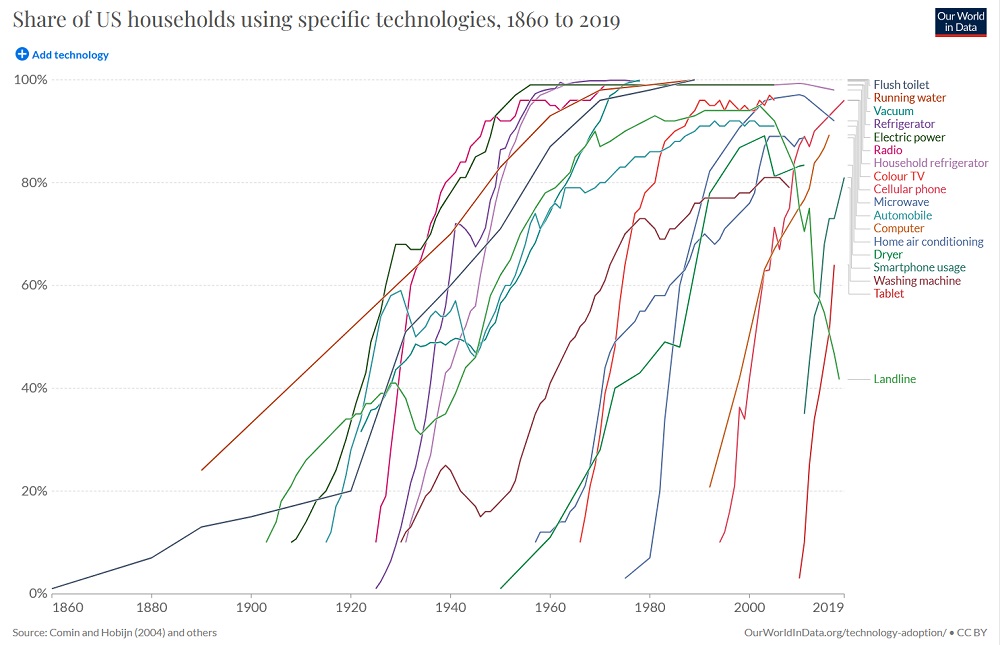
Years ago this graph was considered really cool and it turned up in all sorts of places. Lately it has been neglected, but I thought I’d get its hopes up by giving it a shot at getting trendy again.
The graph shows Americans embraced many technologies rapidly. But I can think of several reasons why consumers won’t adopt electric cars as quickly as radios or microwaves:
- Electric cars still cost considerably more than lower-cost conventional cars.
- Vehicles last a long time and are only replaced gradually.
- EVs aren’t as suitable for driving crazy-long distances through the outback — especially if a course is carefully plotted to avoid all fast chargers.
But I don’t think any of them are very convincing.
Let’s take a look at just one item on the graph above — colour TVs:
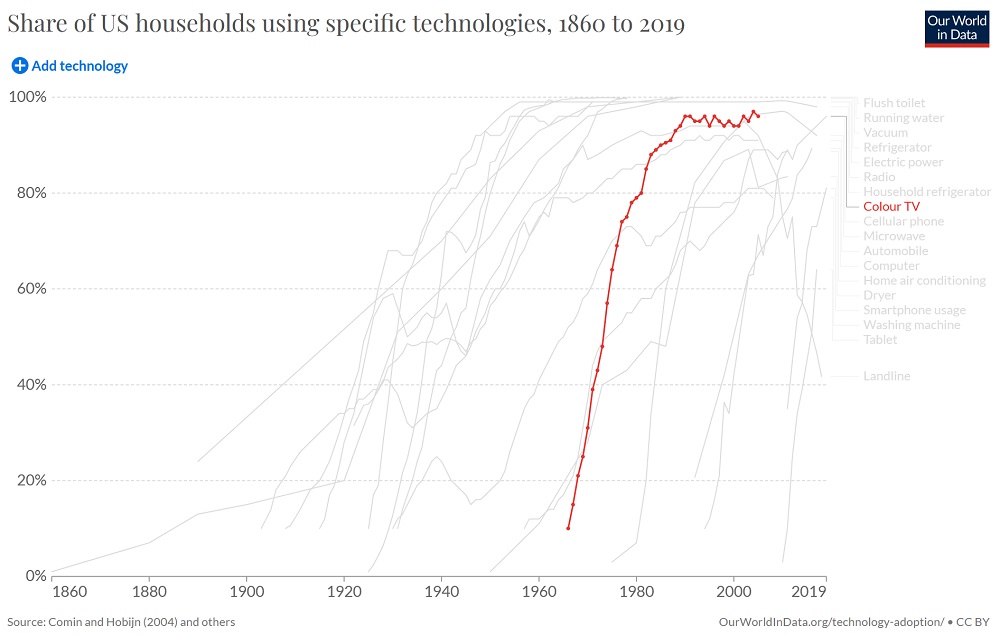

In the US, colour television took off in the second half of the 60s once over 50% of broadcasts were in colour. By the end of the 70s around 90% of homes had at least one television.
But no one had a pressing need for a colour TV:
- Everyone already had a black and white TV3 or at least a radio.
- Colour TVs were very expensive. In Australia, in 1975 they were around $1,100-$1,300 which was about 8 weeks’ average full-time earnings.
The only thing colour TV had going for it was the fact it was better than black and white. But that was enough. After colour transmission was introduced here in March 1975 it was only three years before 70% of homes in Sydney and 64% in Melbourne had colour TVs.
[embedded content]
The only thing EVs have going from them — for the large majority of Australians — is they are better than conventional cars. Their performance is superior to similar priced internal combustion engine vehicles and they’re far cheaper to run. At the moment, new electric vehicles are only available in the mid and upper price ranges, but this will change.
Why So Few Oz EVs?
There are four main reasons why electric car sales have been so low here compared to other developed countries:
- Low petrol and diesel prices by world standards. (But our low average fuel efficiency means Australians can save a lot on fuel by going electric.)
- Until recently, there was little in the way of incentives or subsidies to encourage people to get electric cars. Now there are incentives, but they’re still little compared to many other well-off countries.
- We’re the only country to already have an EV disincentive in place — the Victorian EV road tax — with more planned for the future.
- No fuel efficiency standards.
The largest contributor to a low EV uptake is the last on the list — our lack of fuel efficiency standards. As far as I know, Australia is the only developed country without any fuel efficiency requirements. Because of this, Australian cars now consume nearly twice as much fuel per km as in Europe.
Labor tried to introduce fuel efficiency standards last election but Scott Morrison said they would destroy the weekend. This piece of brilliance saved us from having two days of the week obliterated from the calendar, as happened in Europe, North America, Japan, and everywhere else cars average over 10 km per litre.
Because other countries have fuel efficiency standards, they have an incentive to keep EVs for themselves rather than send them to Australia. But there is good news. Because EV production is increasing so rapidly, other countries should have little difficulty meeting their standards in the future, so more EVs should soon be available here.
Up until now, the global car industry was using the fuel efficiency benefits of electric vehicles to build more petrol and diesel guzzling SUVs. They also built ridiculous oversized trucks for American men who want to compensate for the fact their current truck isn’t the size of a Sherman tank:
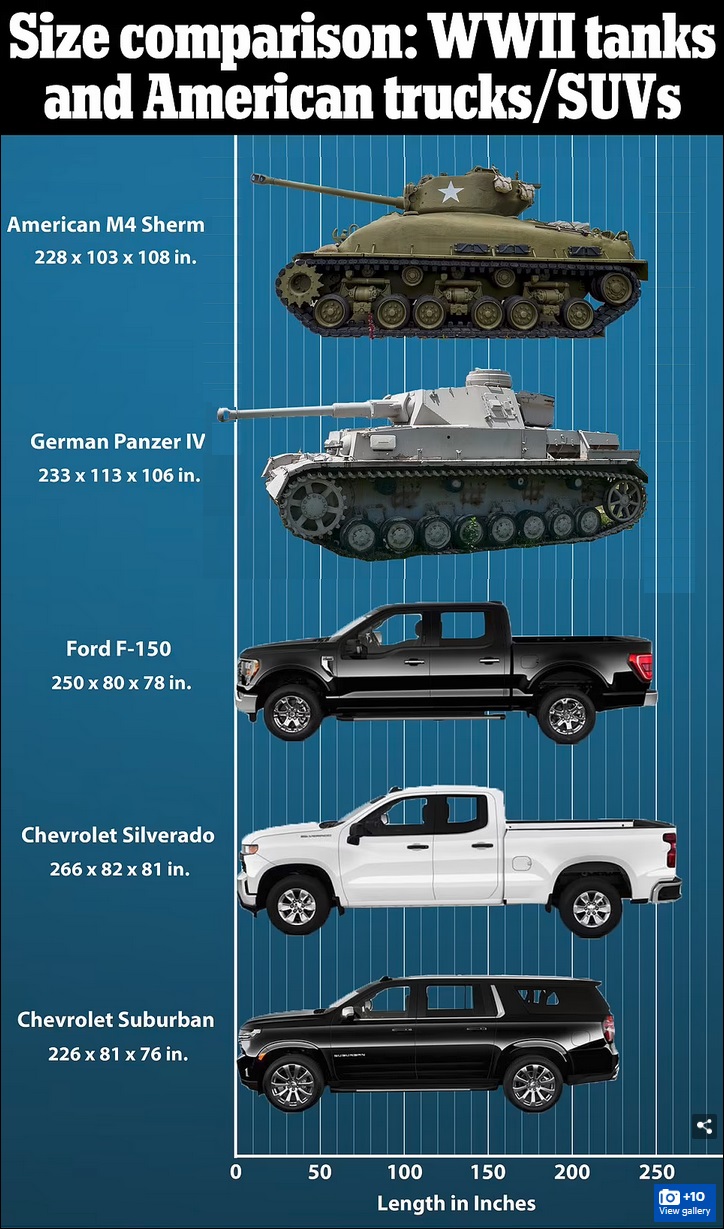
Image: Daily Mail (But note I flipped the tanks because they were facing the wrong way. They’ve been doing a lot in Ukraine lately, so I figured it would be okay.)
But thanks to the run-up in oil prices resulting from Putin’s invasion of Ukraine, I expect people will now be much more focused on fuel efficiency and even more interested in EVs.
A Psychological Problem
There’s also a fourth reason for our low EV uptake that’s psychological. A large number of Australians are convinced they are coiled springs poised to suddenly leap into their cars and surrender to the urge to drive across the outback and start chucking laps around Uluru. This is common even if the last time the deluded person saw a kangaroo was when they bought a dodgy meat pie.
While there are definitely some people who drive crazy long distances in the outback, for most Australians EV benefits far outweigh any disadvantages. Because electric cars can be plugged in at home, most people will spend less time on charging than they currently spend at the servo. Families with two or more cars will also find it easy to get one EV and then decide if they want to go all-electric.
As for people in remote locations, I strongly suspect that as EV rapid chargers become more common and charging times faster, people who regularly drive long distances will rush to buy electric vehicles to save on fuel costs. These savings will grow as solar energy falls further in cost.
Even today – with patience and a plan, it is possible to do some pretty remote trips in an EV and it’s only going to get easier as charging infrastructure improves.
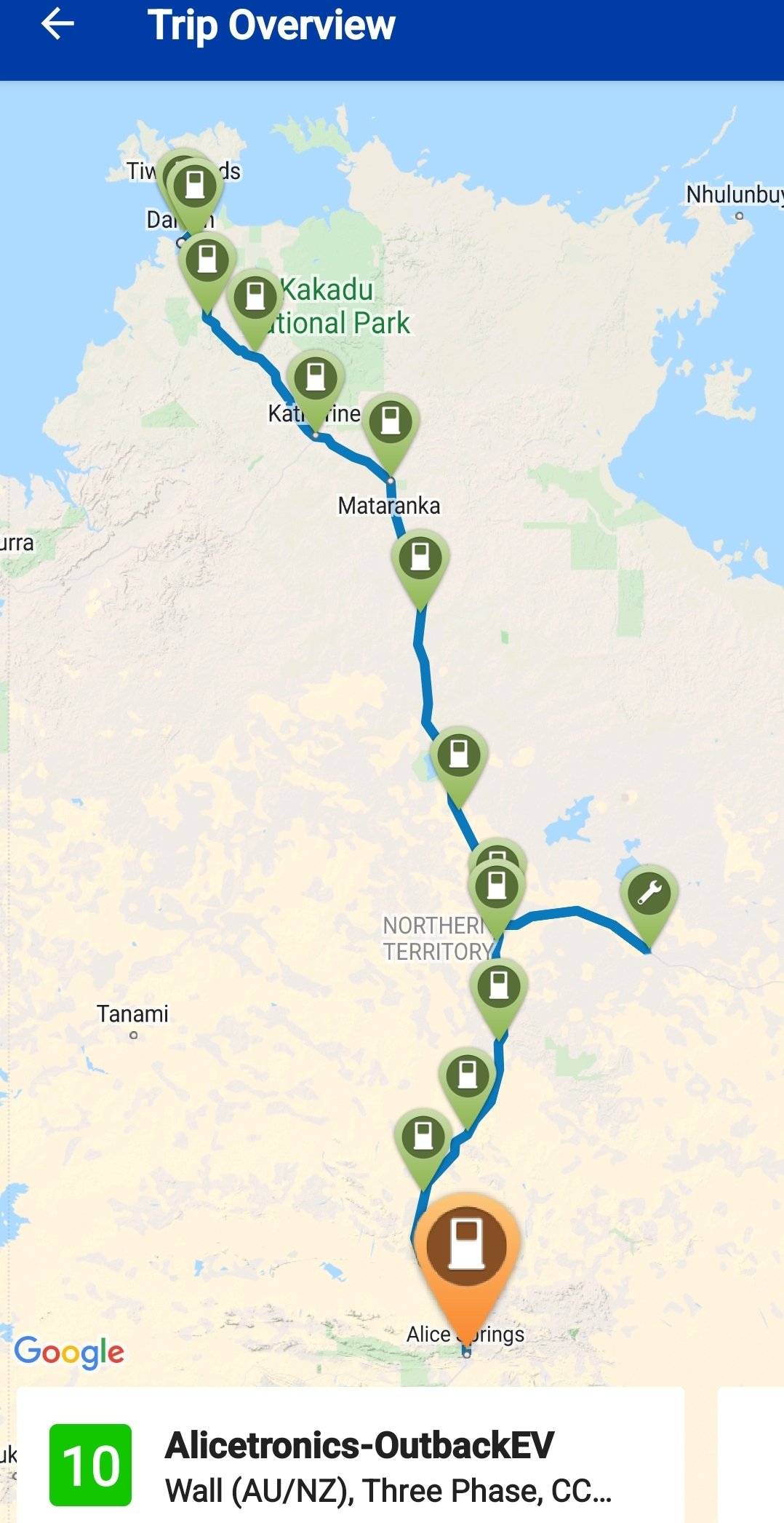
Image: Outback EV Hunter
We’re Getting There
With sales tripling in 2021 from the year before, EVs are clearly taking off in Australia. Hopefully, they’ll go from just over 2% of new vehicle sales last year to over 5% this year. This will depend on availability, but thanks to the recent run-up in oil prices, I expect we’ll see more demand and more electric cars offered for sale here. After a very slow start, Australia’s EV revolution is underway.

In my optimistic vision of the future, Australia’s post-apocalyptic wasteland raiders will drive electric mutant mobiles and shoot lightning from their guitars.
Footnotes
- They don’t call it a report. They refer to it as an “analysis”. I think the difference is, when you print out a hard copy of an IEA analysis it’s easy to hold in one hand, while if you print out a report it’s hefty enough to use as a murder weapon. ↩
- One drawback is it’s affected by changes in conventional car sales. For example, thanks to COVID, sales of all cars in 2020 were 15% lower than in 2019. This bumped up EVs’ sales percentage, but the effect will disappear now the slowdown in conventional car production is nearly over. ↩
- Even after we got colour TV here they kept playing the Black and White Minstrel Show for a full three years. If you don’t know what that was, you can follow this link, but for god’s sake, don’t watch it all at once. If you were born after the 70s it will kill you. ↩
Original Source: https://www.solarquotes.com.au/blog/ev-uptake-sales-australia/

